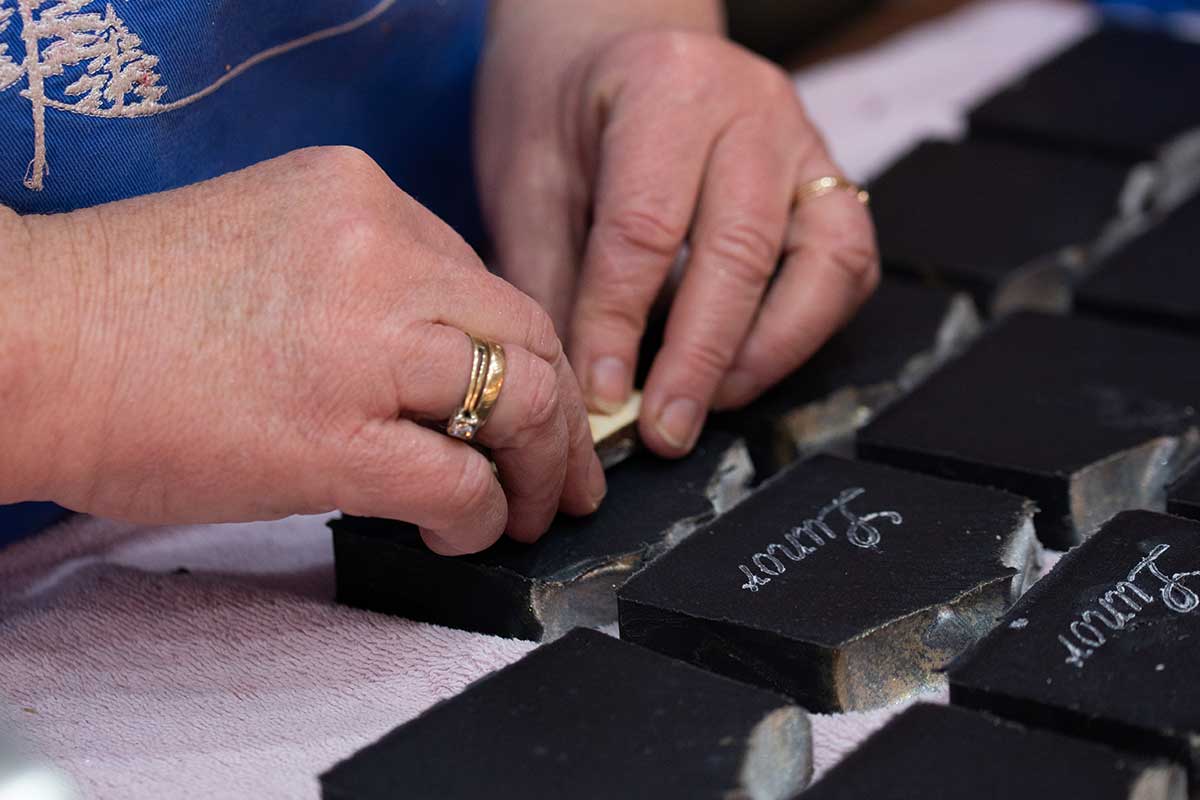
Susanne Albert crafts handmade soaps from natural ingredients in the Nordschwarzwald soap school and workshop. We discover the benefits of these natural soaps over regular soaps from the drugstore. And why the Lunor soap like to rest a little before use.
It’s a gray November day. One of those subdued days between autumn and winter. Rainy, gloomy, cold. Little do we know that today we are in for an encounter that will warm our hearts.
Photographer Anne and I make our way along the narrow Black Forest roads to get to Wörnersberg. At least the lush-green firs stand up to the dreary mist and drizzle. When we reach our destination, it’s love at first sight. An old former schoolhouse, made from stone and wood, welcomes us. This is the setting for Susanne Albert’s soap workshop and soap school. A beaming Susanne opens the door for us. A dog, so fluffy that we can hardly make out front from back, is also an integral part of the welcome committee. A pleasant warmth immediately engulfs us—not only caused by the homely stove. When you venture into Susanne’s world of soaps, hang on to your senses, because they will be beguiled from all quarters.
The small room has something to discover in every nook and cranny. A variety of soaps are displayed on a large table, with all kinds of accessories in every niche. The broomstick dangling from the ceiling makes us feel like we are in a cozy witch’s cottage. Hundreds of different scents waft by our noses all at once and we intuitively follow these scent tracks to soap bars in all shapes and colors. At the heart is the small soap kitchen. The vast assortment continues here: countless scent bottles, neatly sorted, wait on a shelf to be used. Soap dishes, pots, sieves and all kinds of tools are stacked up. Our eyes can’t decide where to look first and our noses are bemused at where to sniff first.
Lunor soap: Midnight Black and handmade
“So, this is where the magic potions are brewed?” I ask Susanne with a wink, who is currently perusing her magic spells—sorry, her soap recipes. “Exactly,” laughs Susanne heartily. “Even with all the natural ingredients, soap making is basically simple chemistry. And that’s where precision is important.” She brings out some ingredients and tools. “The Lunor Christmas soaps have the ‘Olive Lush’ scent, a very pleasant one that everyone loves. I call this color ‘Midnight Dream’. It is produced by pure activated carbon.”
The soaps from the Nordschwarzwald soap school and workshop cannot be compared alongside regular soaps from the drugstore. As well as the intricate manual work in small-scale production, the carefully selected ingredients make a huge difference. Susanne Albert’s soaps have three basic ingredients: good, stable fats; water; and soda lye for the saponification process. Of course, it doesn’t contain any unnatural preservatives.
What is does contain, though, is traditional soda lye. This elaborate manufacturing process results in a natural over-fatting of the natural soap. This means that not only does it remove dirt and skin particles during the washing process as you would expect, but at the same time some fat is returned to the skin, giving it some extra care. Lunor Christmas soap has an over-fatting degree of 10%. This means that 10% of the fats remain in the soap while the remaining 90% are saponified. In a nutshell, 10% more care for your hands.
Soap instead of medication
“Now, let’s get started. Protective masks on, please!” cautions Susanne. We observe from a respectful distance how Susanne first prepares the various fats and heats the solid fats until they liquify. Lunor soap contains shea butter, olive oil, rice germ oil, castor oil, rapeseed oil and coconut oil. The coconut oil is a lathering fat and ensures that the soap foams properly when you wash your hands. The soda lye solution is stirred into water, which causes a chemical reaction: the mixture heats up. It is placed in a cold water bath to cool down.
Meanwhile, Susanne mixes the liquid and the melted solid fats with the activated carbon. This forms a viscous, deep black paste. Now the potentially dangerous bit: the soda lye and water mixture is added to the fats. But Susanne has decades of experience, so everything goes smoothly today. Next, they are carefully puréed so that the lye and fat combine with each other. Then it’s wait and see.
“I’m 60 years old now—old enough to look at things more calmly. You have to take your time when you’re making soap, and not rush it. Good things take time,” Susanne reveals and checks the consistency of the black soap mixture over and over again. “Soap as a product has always kind of appealed to me. My neurodermatitis skin condition meant I had to delve into the subject in my younger years. So, instead of taking medication, I used good old curd soap. That’s how soaps became my hobby. To begin with, I funded this with soap seminars. I have tinkered and experimented quite a lot. When my husband and I were looking for a house in the northern Black Forest, we came across this old schoolhouse. As soon as we came into the former classroom, my husband immediately said: “Wow, this could be your soap school!” It fits like a glove: I teach the traditional art of soap making in this old schoolhouse.”
Overnight the soap ‘goes to bed’
Our attention is drawn to several tube-like, beige-colored objects leaning against the window. “They’re loofah cucumbers,” explains Susanne. “Look, here are some dried loofahs cut into pieces. The soap is placed on the loofah cucumber so that it dries better and doesn’t get ‘sloppy’.” The local dialect, Swabian, has a term for it: ‘Schlonzig’, which means sticky and greasy.
Meantime, the Lunor soap mixture has taken on the consistency of vanilla whip. It’s now ready to be poured into the soap mold which is lined with baking paper. The finish requires a certain amount of skill. Susanne forms irregular peaks from the surface of the soap block. The whole thing is then garnished with a touch of gold and silver glitter powder. Overnight the soap block ‘goes to bed’, as Susanne affectionately puts it. The bed is a warm electric blanket under which the gel phase happens over the next 48 hours. Afterwards, the soap is cooled down again and its intensive, midnight-black color appears.
Susanne pulls out a block of soap that she made two days ago. This one is now ready for cutting. She carefully positions the whole block in the soap cutter. A tool that looks like a well-tuned string instrument. In a single movement, the strings slice through the soap block and neatly divide it into 18 equal parts. “Mmm, it sounds the same as serving up tiramisu,” says photographer Anne. Not a bad comparison, as it happens, because even a soap needs well-balanced ingredients. Susanne takes a taste from a leftover piece of soap. “Actually, soap is not poisonous at all. On the contrary, I always taste the soap to make sure it is just right. Mind you, tiramisu is even more delicious…”
Lunor soaps are happiest if they can mature and rest
The final step is to emboss the Lunor logo onto the soap. Susanne dabs the wooden stamp carefully in some glitter dust and presses it into the soap. And there you have it—the masterpiece!
“One more thing,” Susanne mentions before we head home. “The soaps are happiest if they can mature and rest a little longer. It’s best to store them in a cool, dry, dark place. At least a couple of weeks, but a couple of years is good too. The longer the soap is allowed to mature, the harder and better it becomes. You can just put it in your closet, then it will also scent your clothes.”
Before we leave the Nordschwarzwald soap school and workshop, we promise to meet again. Susanne Albert does not have to resort to brewing magic potions to enchant every visitor with her beguiling soaps and warm-hearted nature.
More about Susanne Alberts Nordschwarzwald soap school and workshop: www.waldseifen.de

Lunor is a hallmark for craftsmanship and attention to detail. So the Lunor soaps are not the only handmade gift for Christmas this year. The Christmas card with its watercolor motif has been hand-painted especially for you by our talented designer Anna.

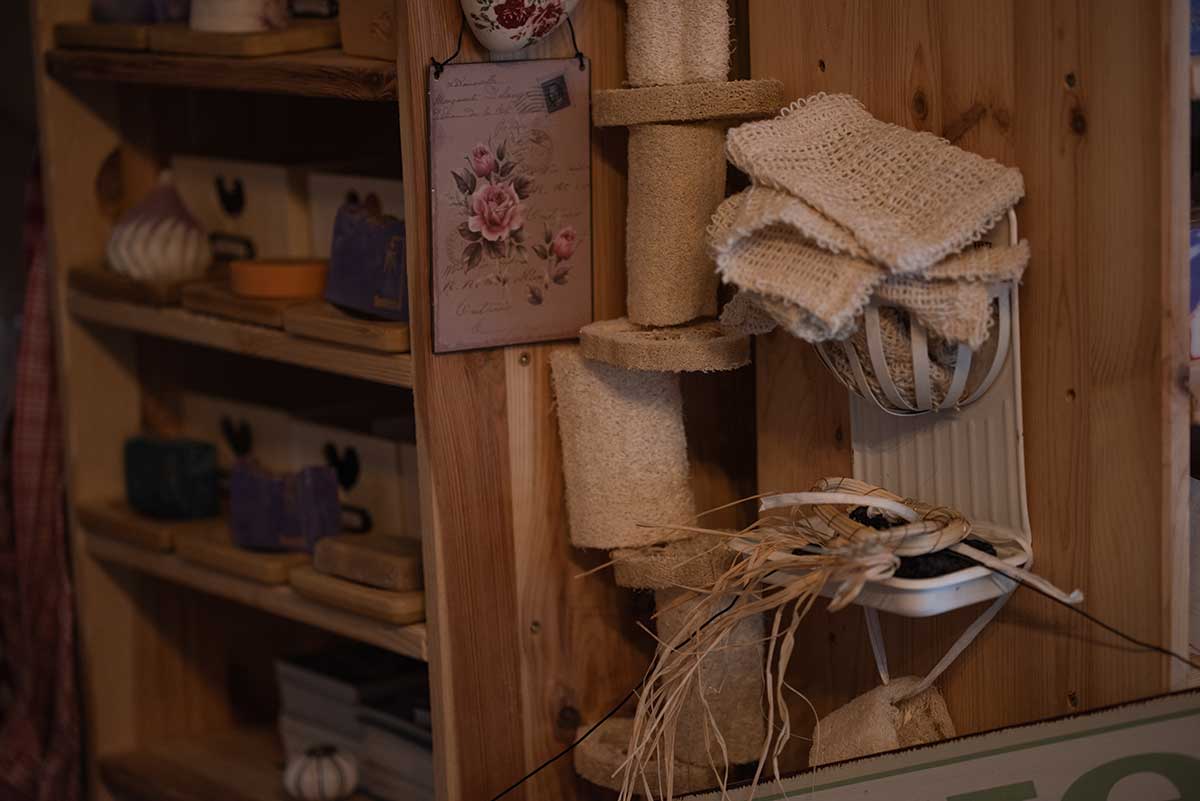
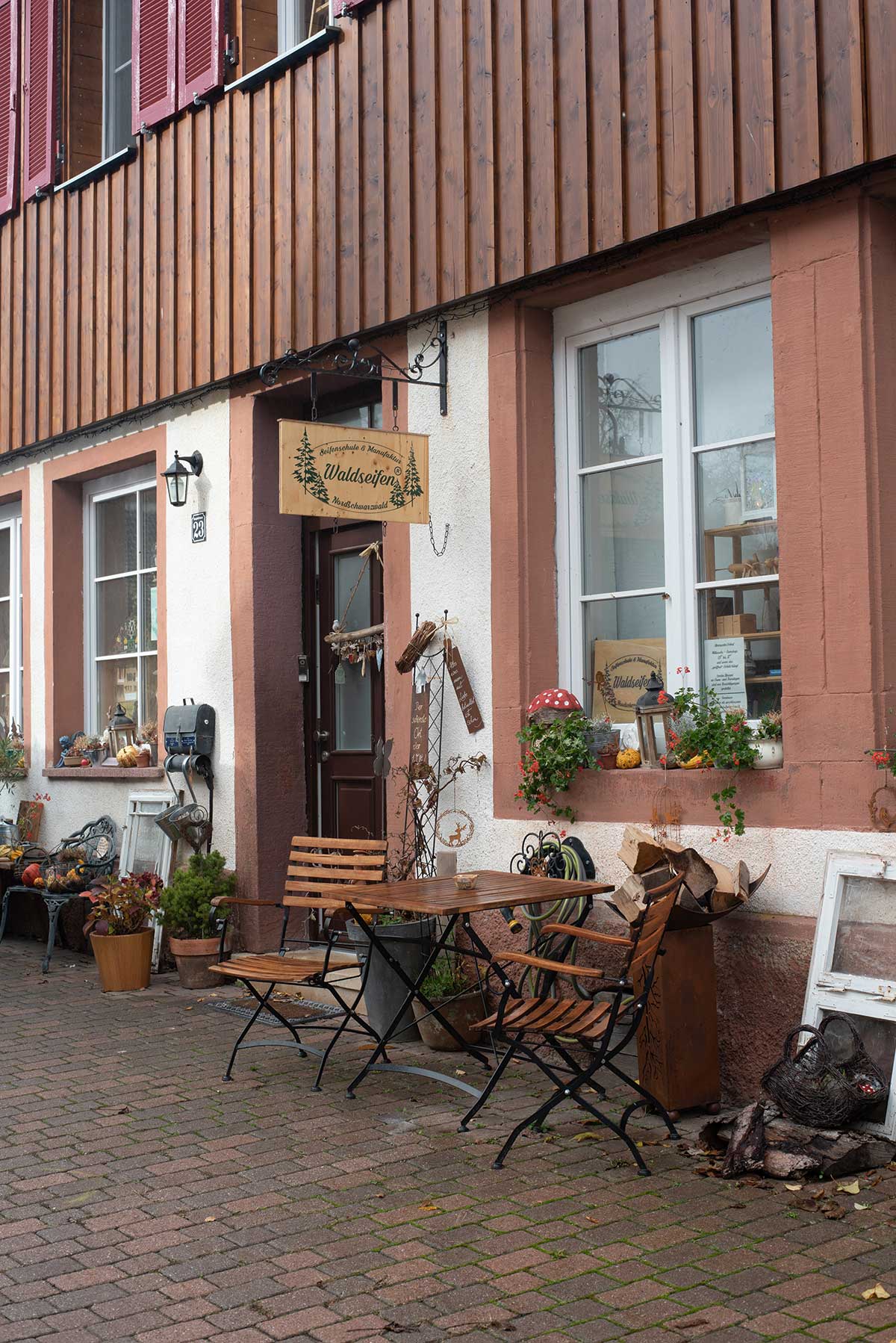
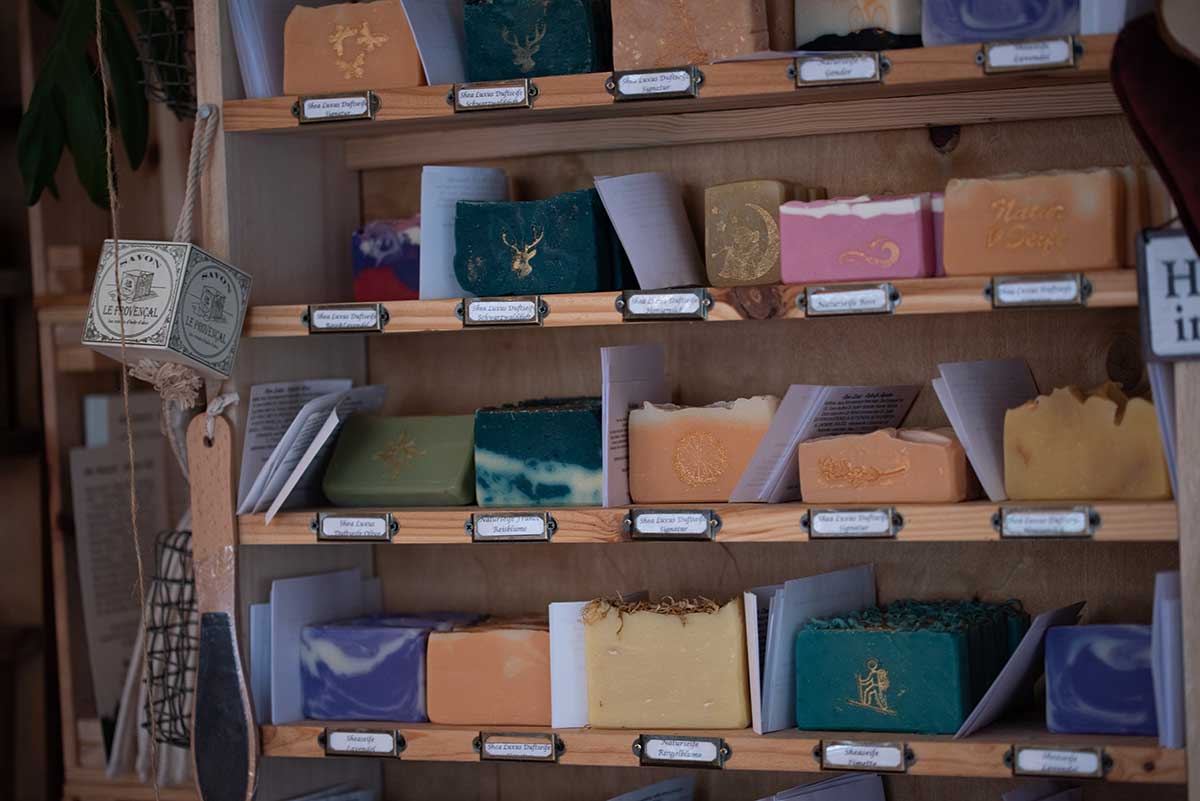
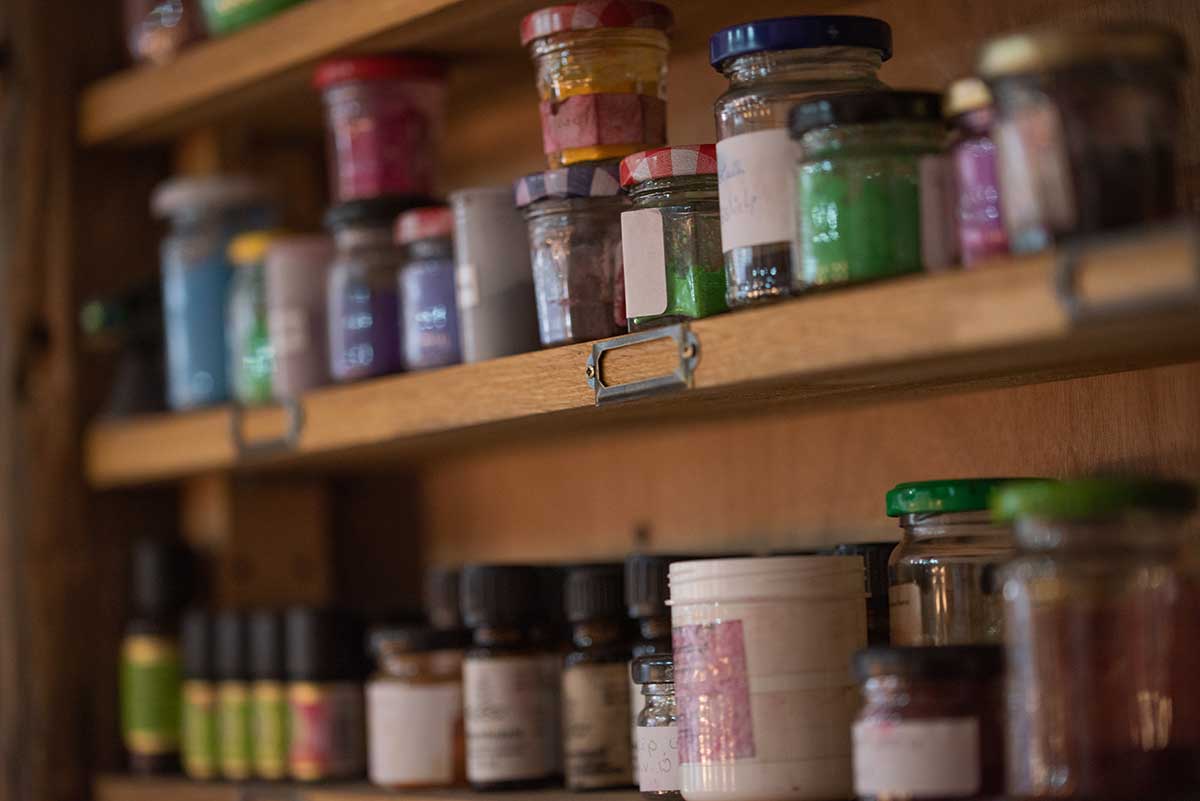
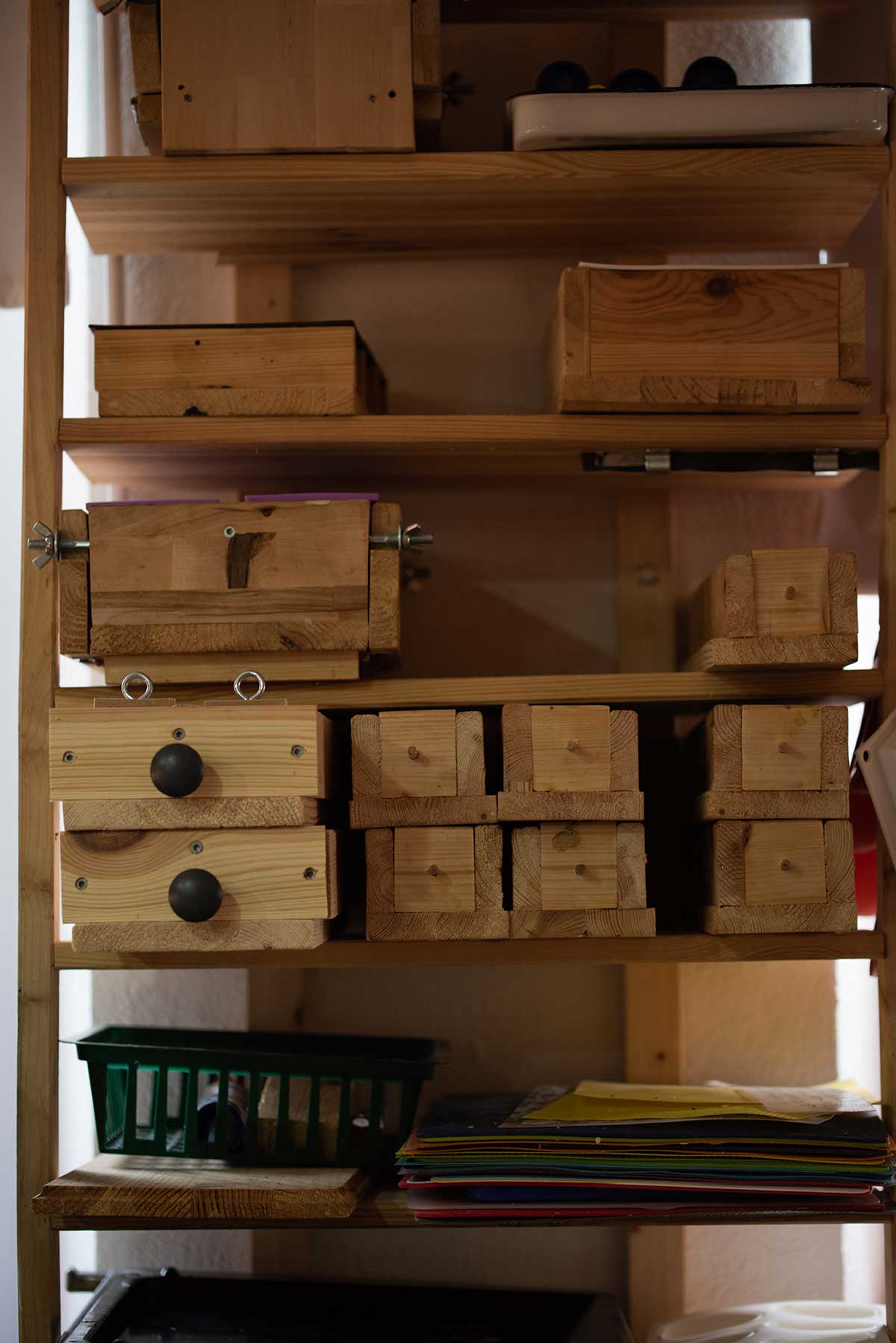
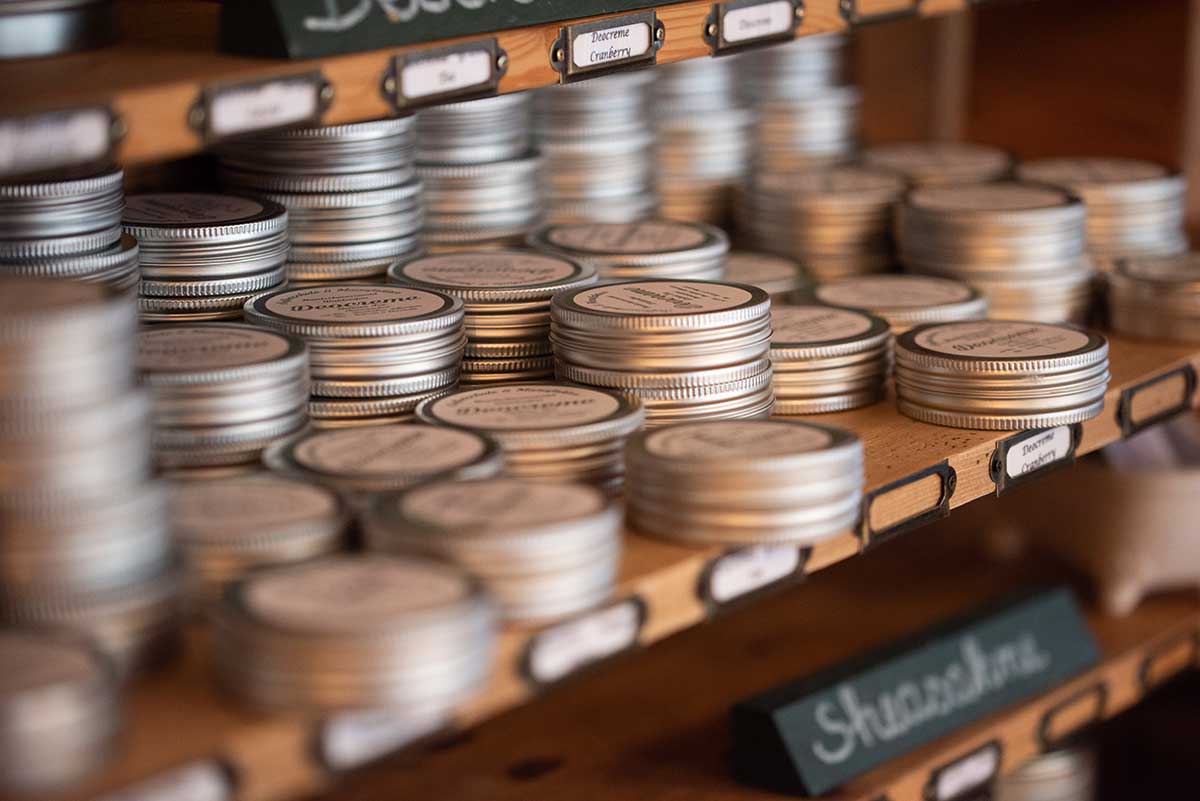

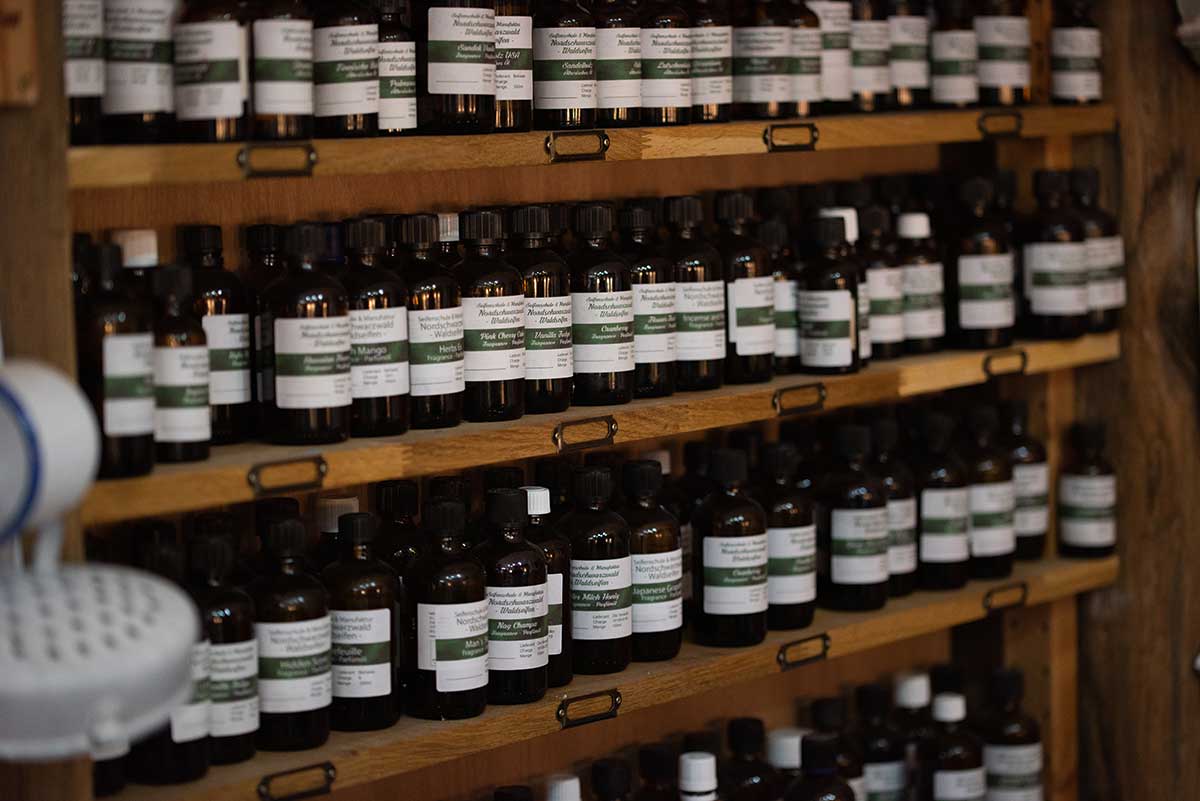

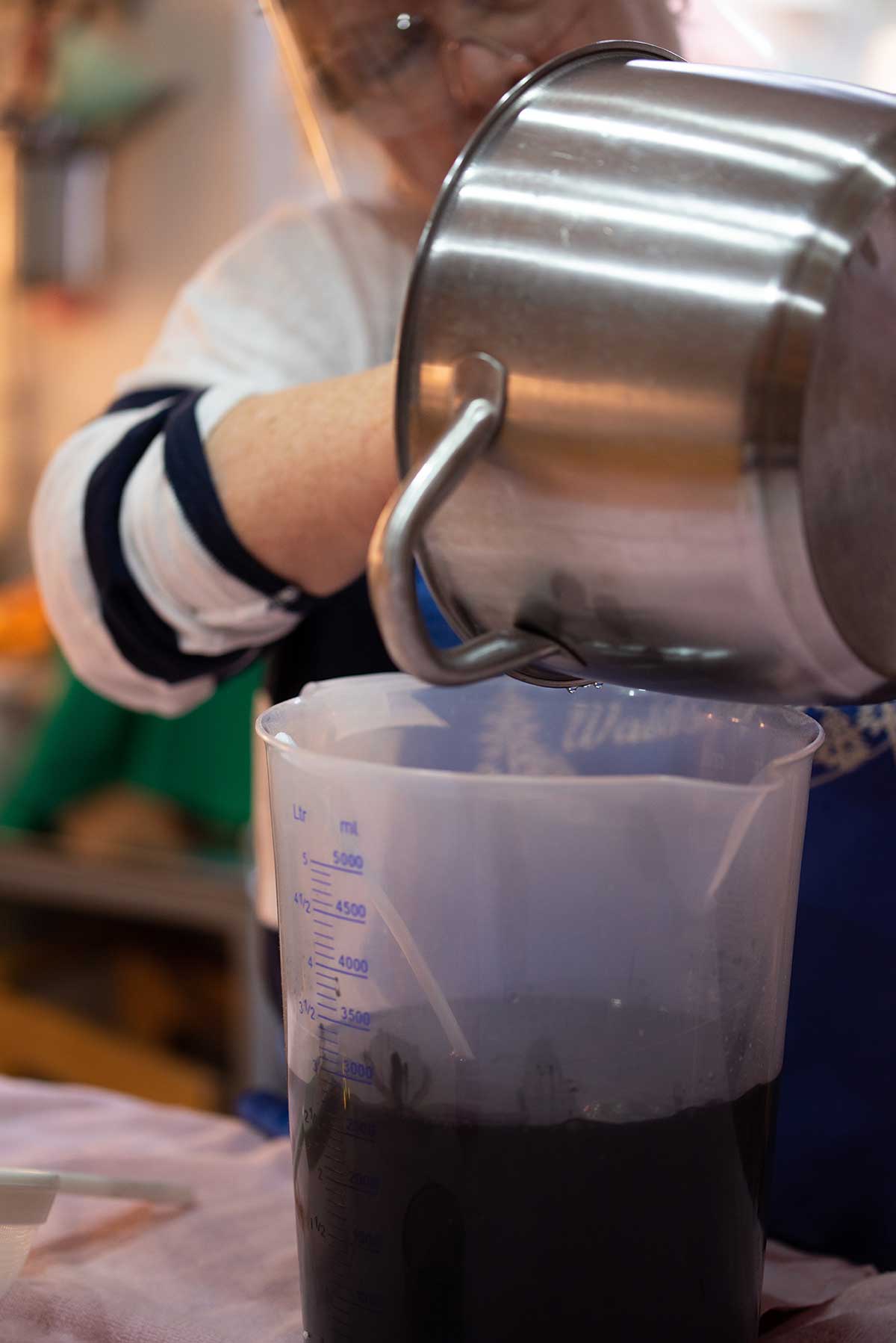
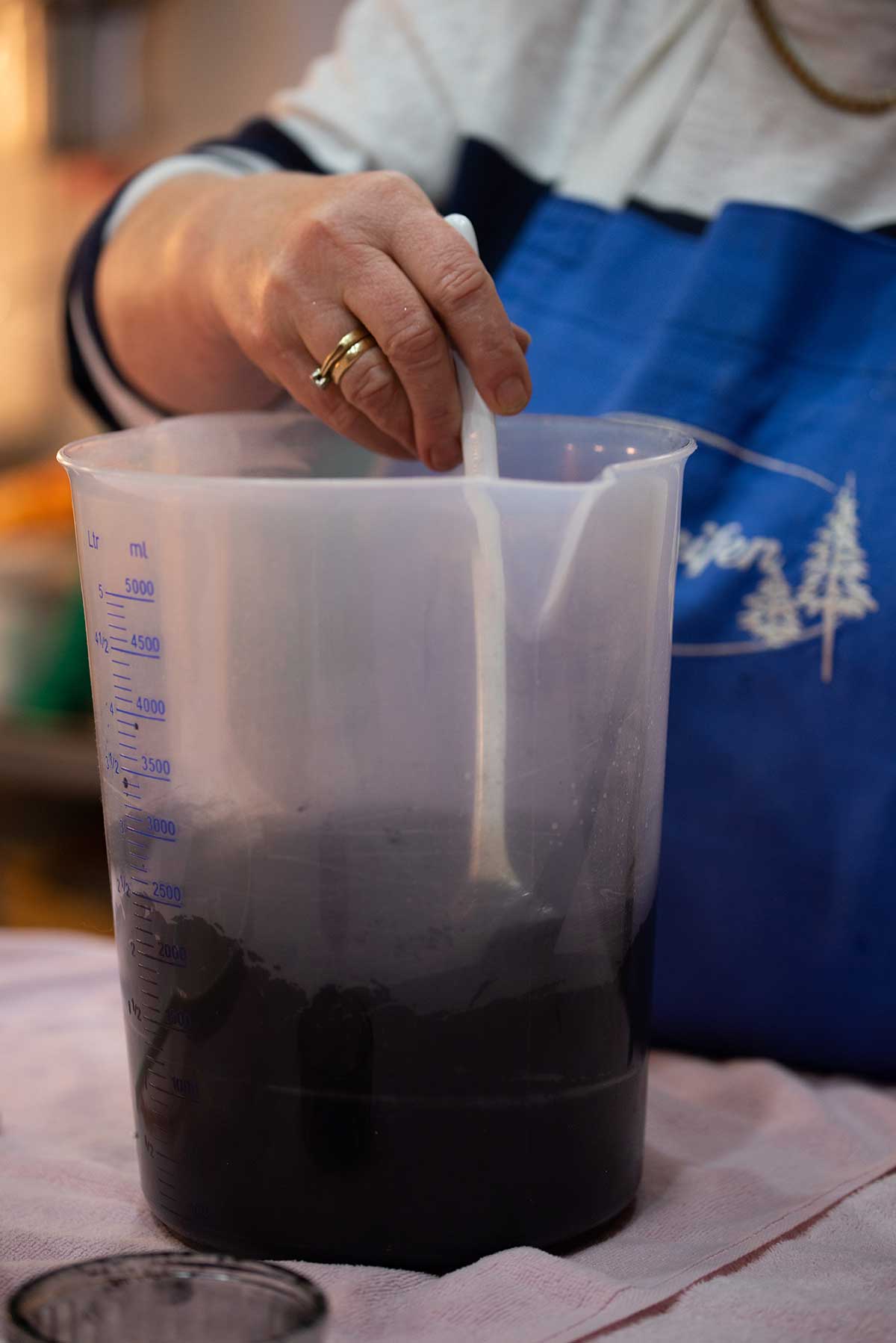
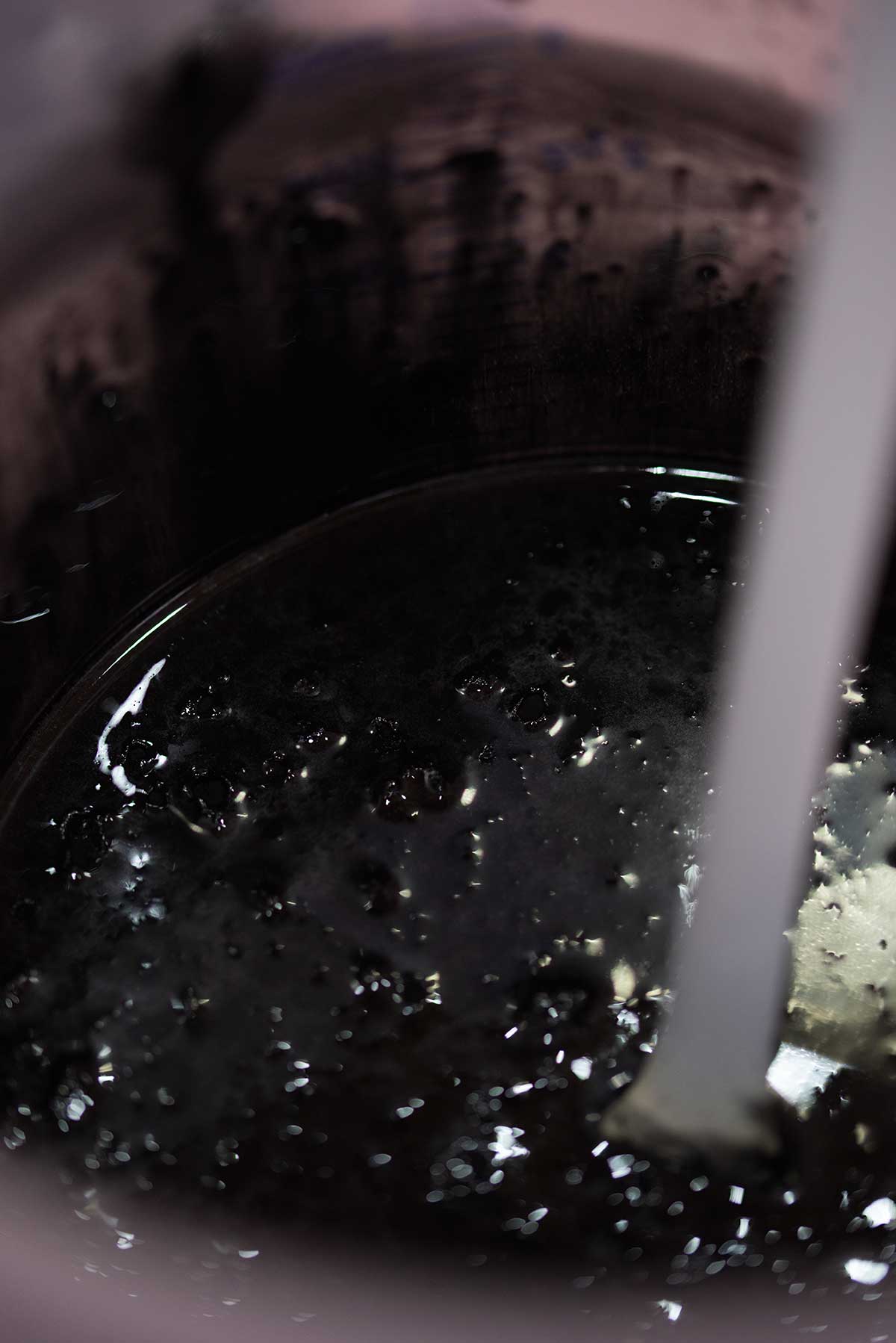
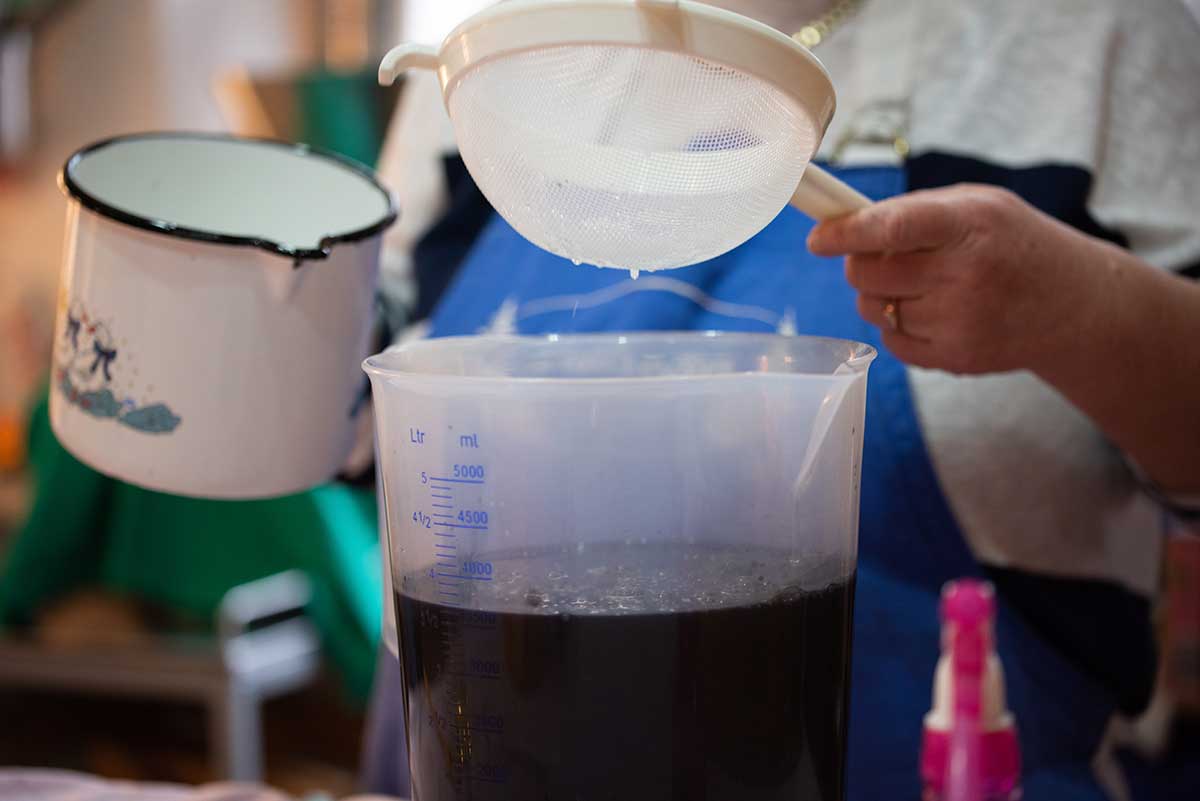

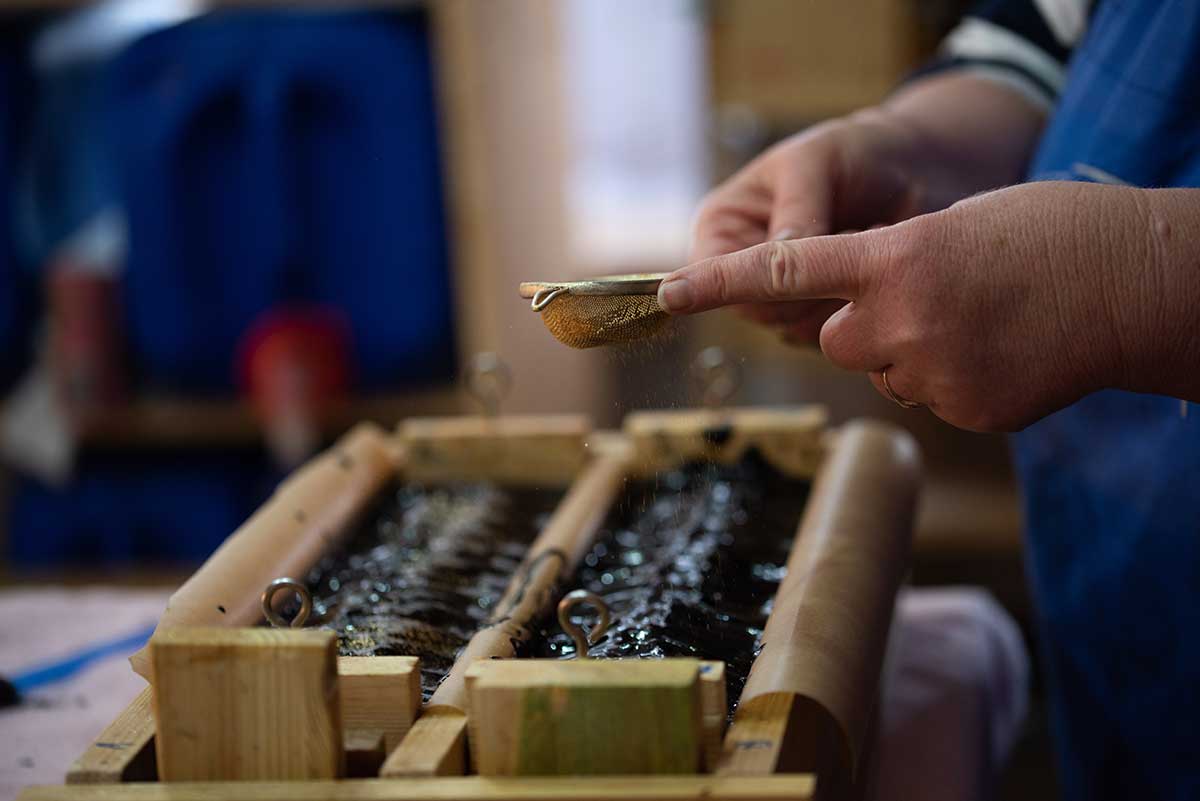
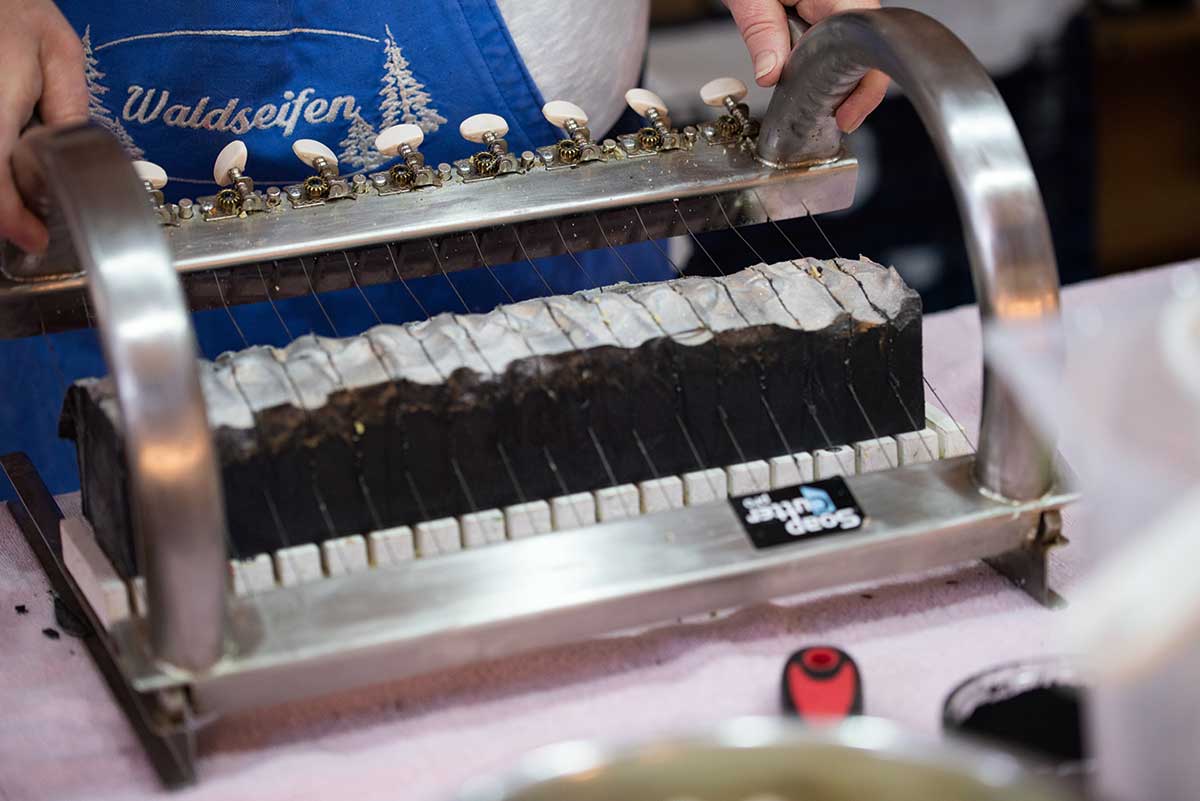
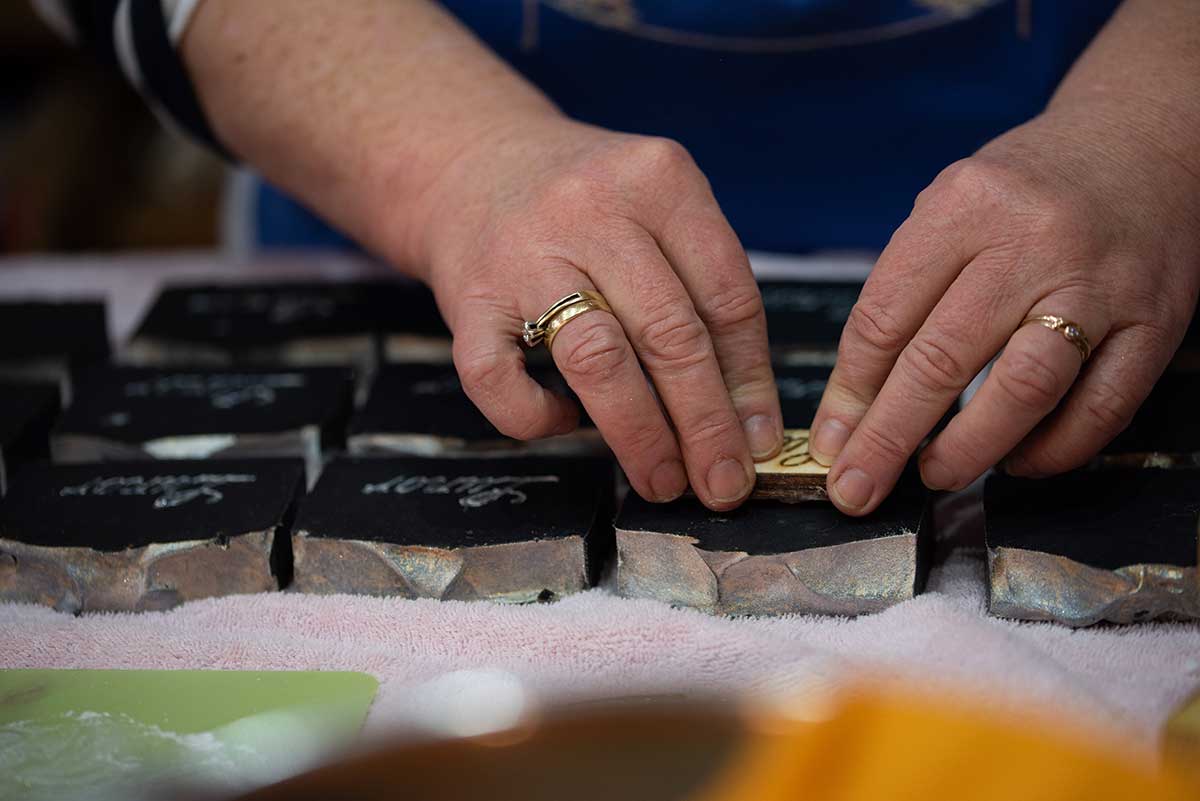
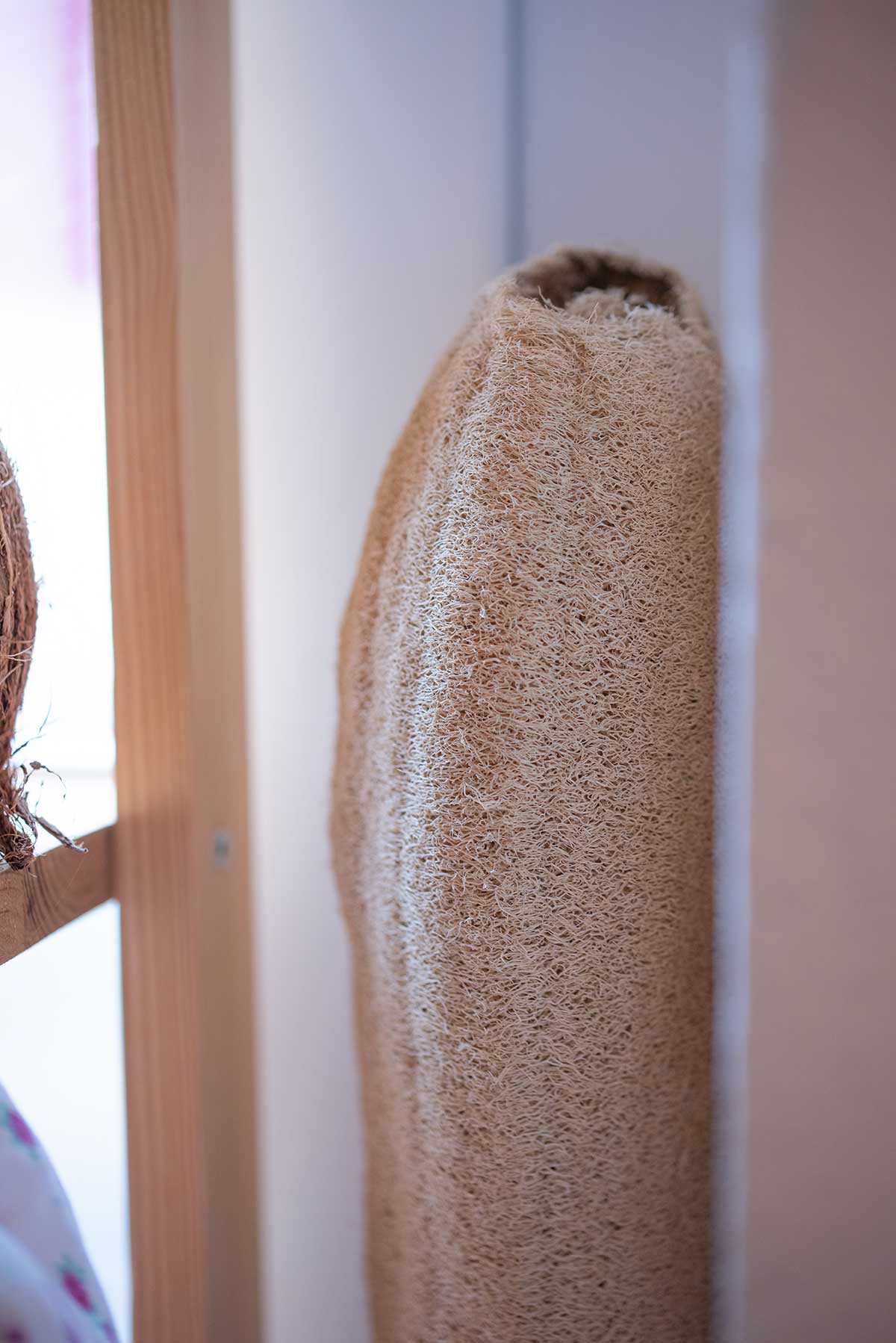
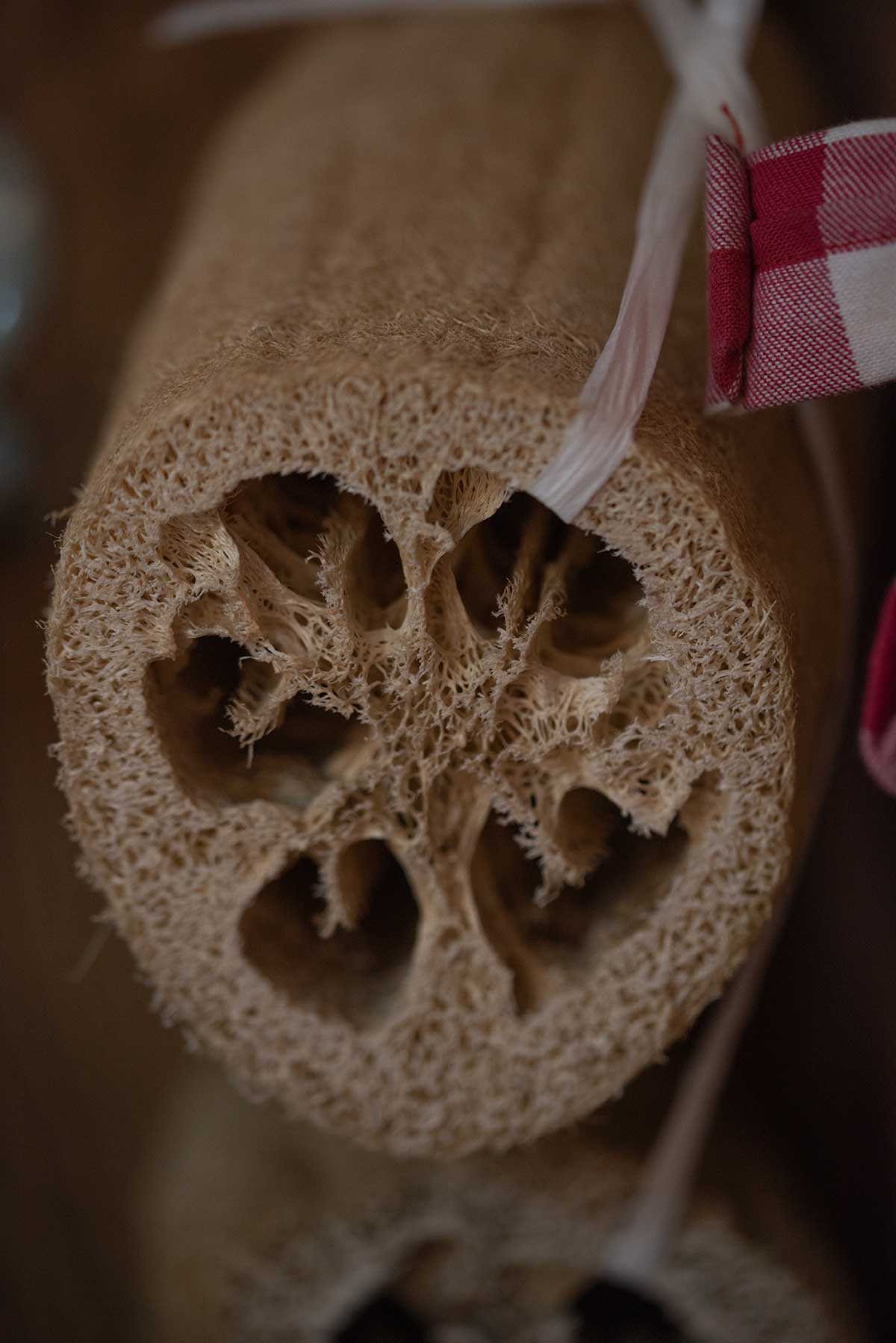
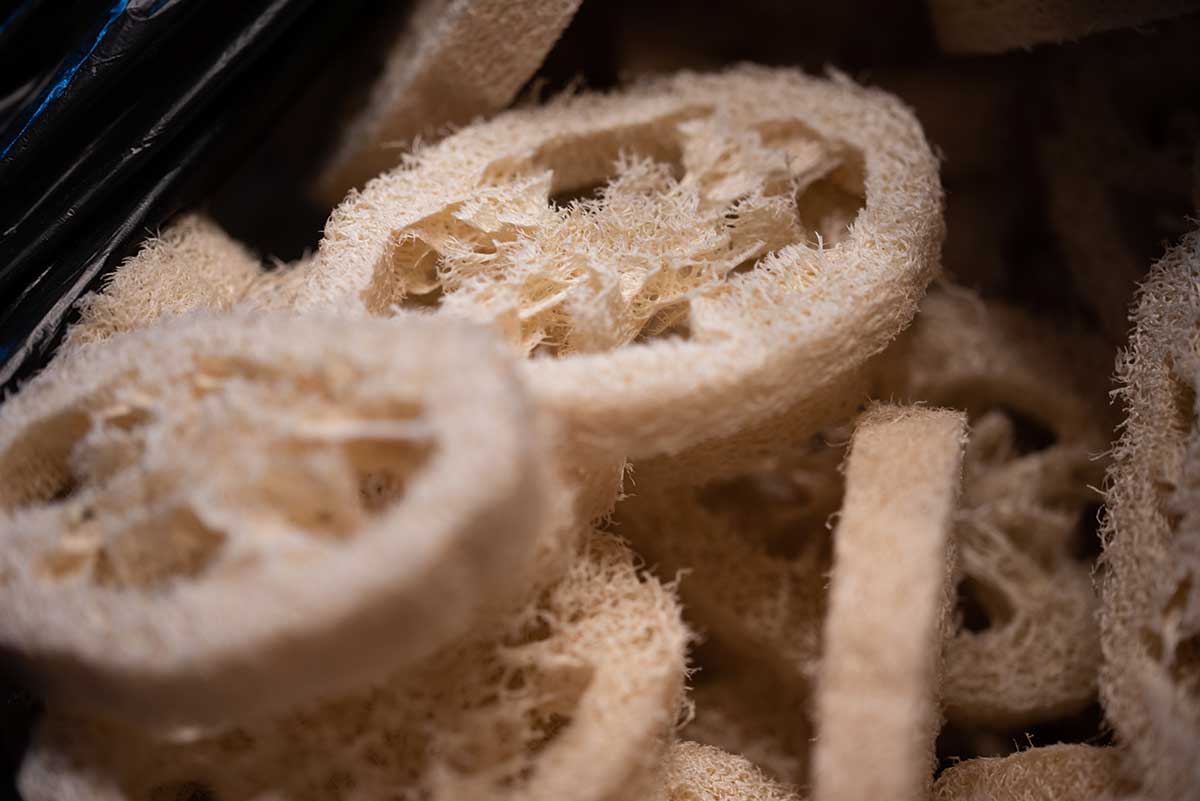
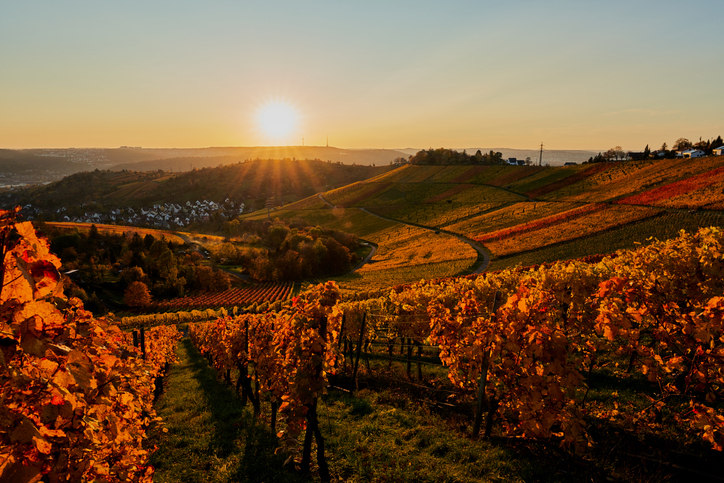
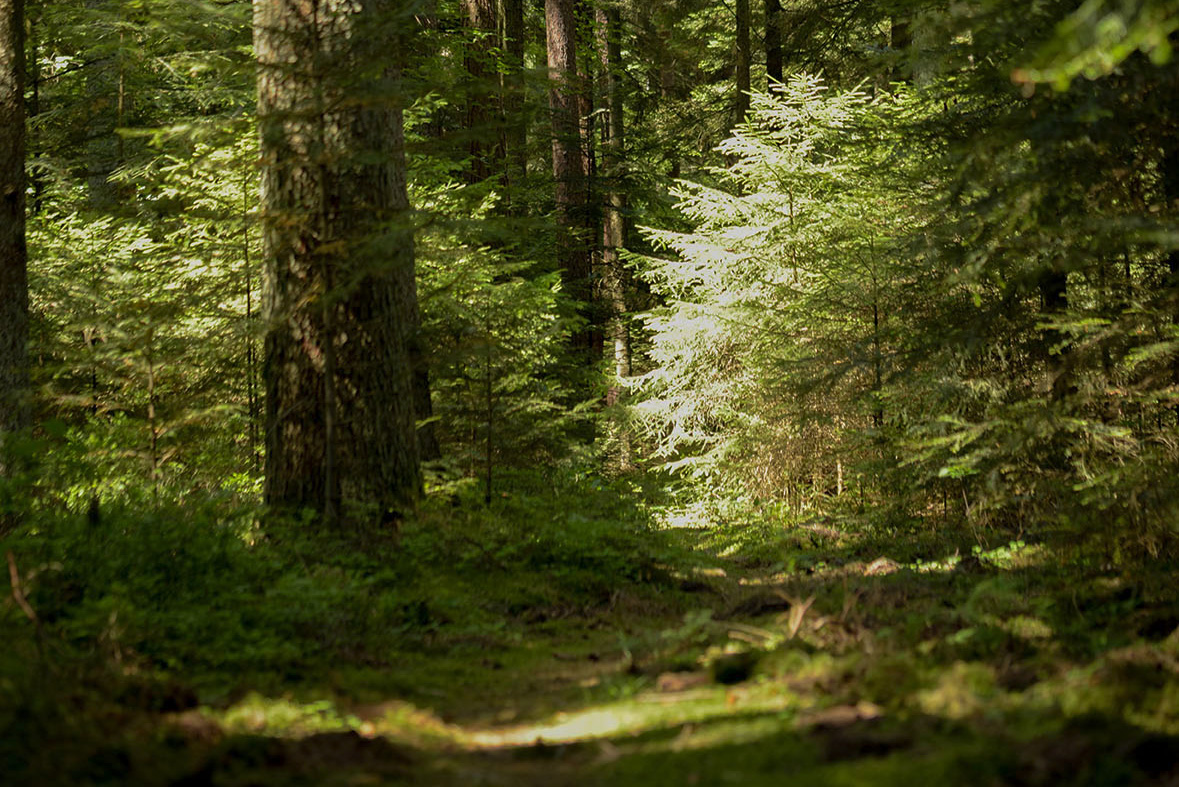
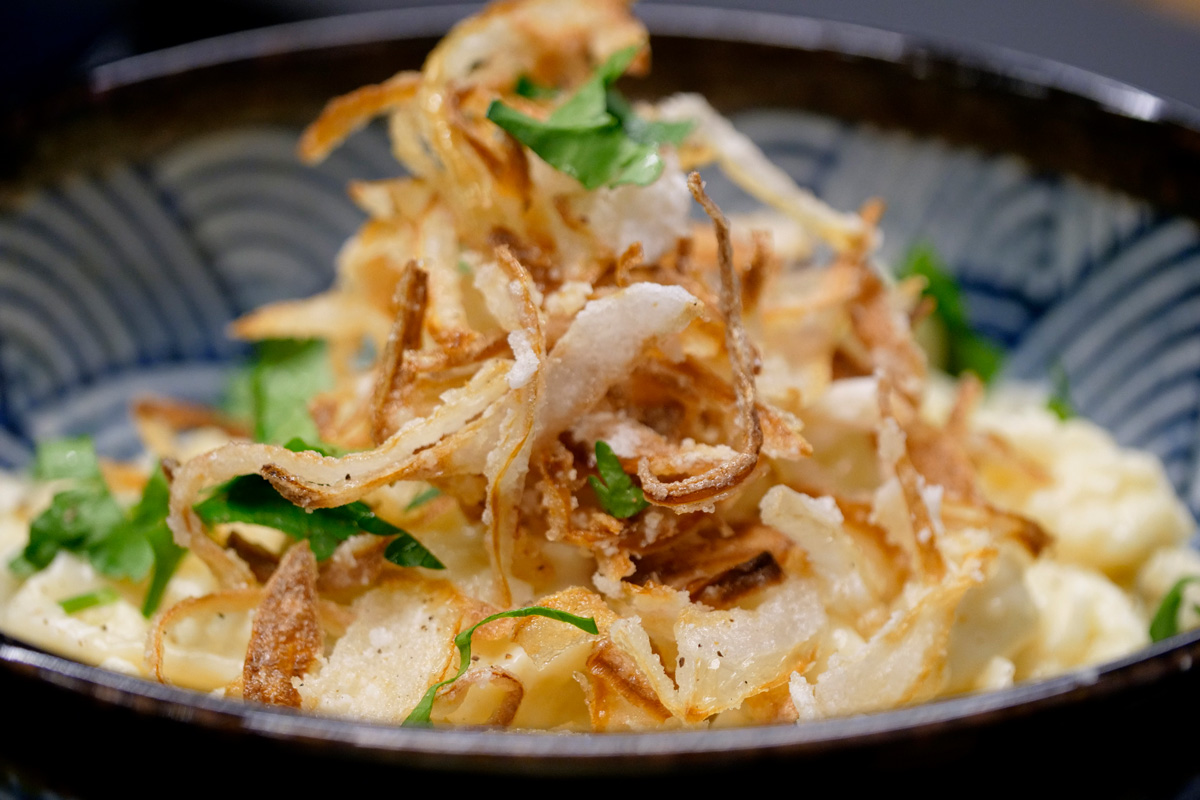
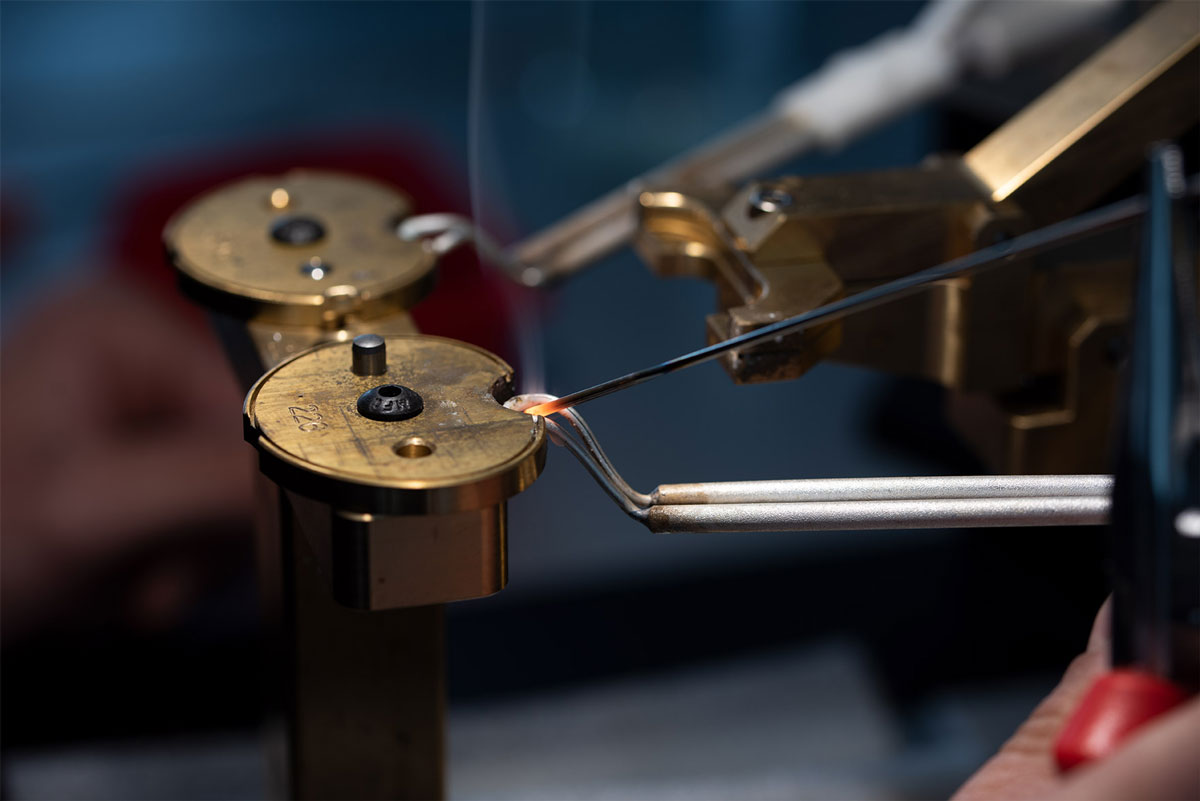

Leave A Comment